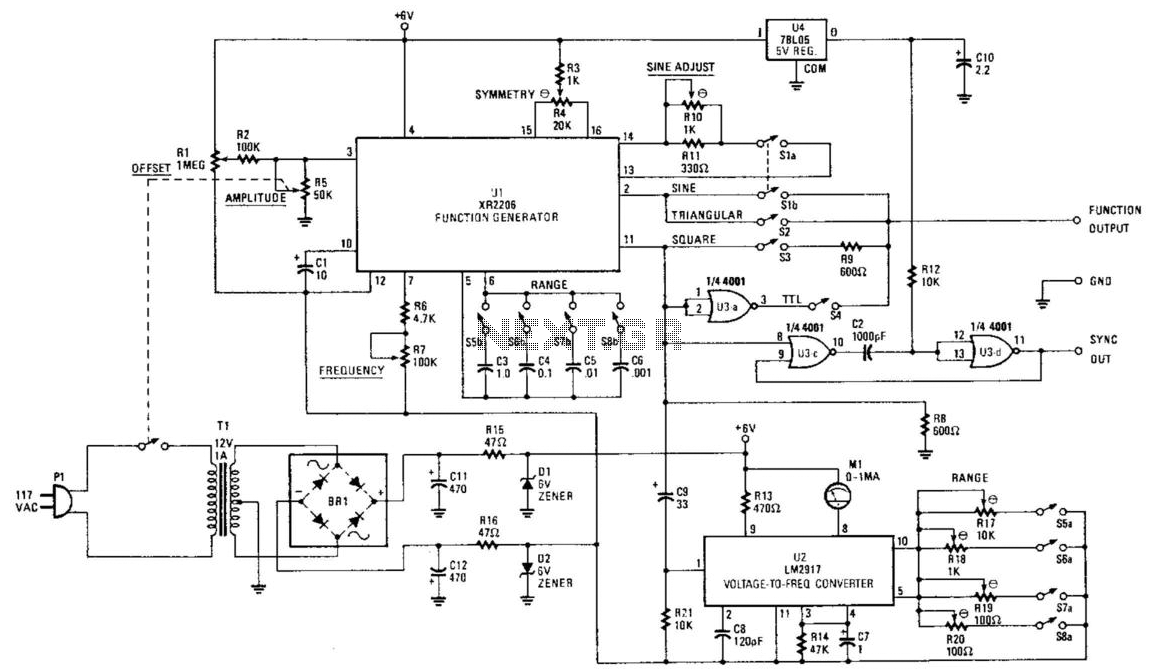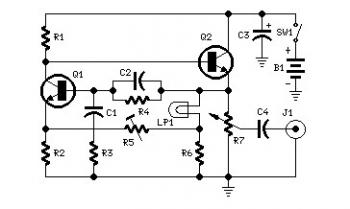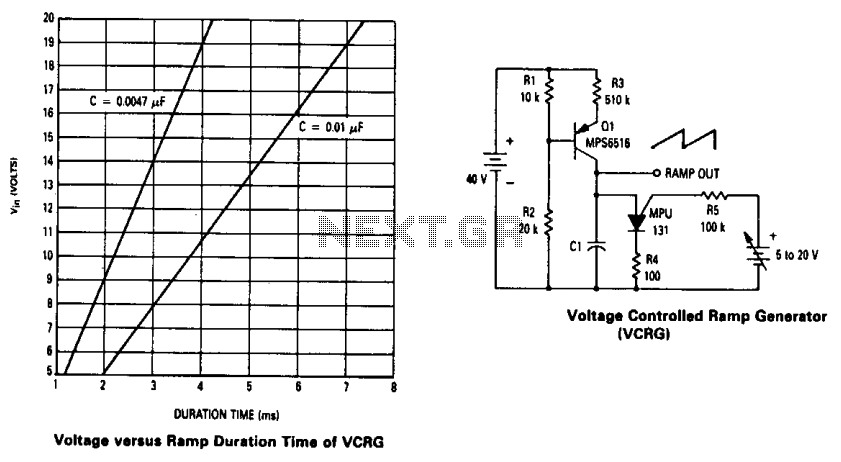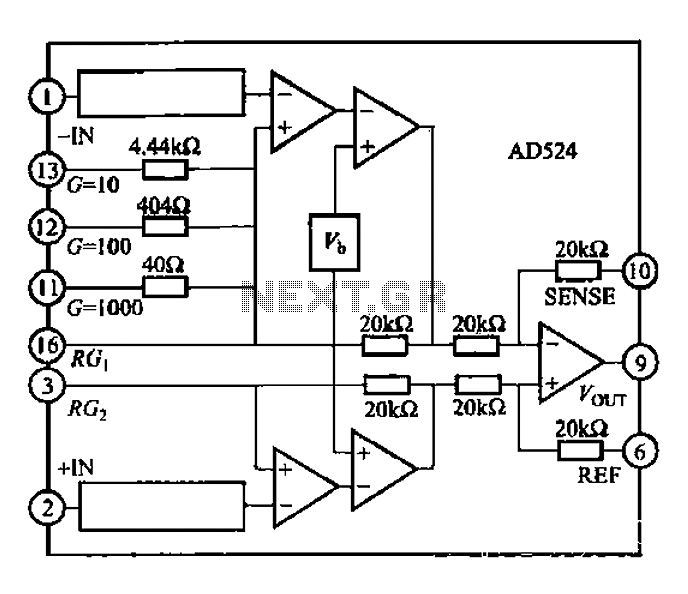
Audio Function Generator

Using an EXAR XR2206, this generator will produce sine, square, and triangular waves from 10 Hz to 100 kHz. The XR2206 chip, R7 controls frequency, and S5 through S8 select the frequency range. U3 produces a TTL-compatible square-wave output, while U3C and D produce a sync signal for scope use. U2 is a frequency/voltage converter that is used to drive analog meter M1, which reads the generator frequency.
The circuit utilizes the EXAR XR2206 function generator IC, renowned for its versatility in generating various waveforms. The XR2206 is capable of producing sine, square, and triangular waveforms across a frequency range of 10 Hz to 100 kHz, making it suitable for a wide array of applications in testing and signal processing.
The frequency of the output waveforms is primarily controlled by resistor R7. By adjusting R7, the user can modify the frequency output of the generator. Additionally, switches S5 through S8 are employed to select the frequency range, allowing for finer control over the output frequencies. This feature is particularly useful for applications requiring precise frequency settings.
The output stage of the circuit includes a TTL-compatible square-wave output generated by operational amplifier U3. This output can interface directly with digital logic circuits or other TTL-compatible devices, providing versatility in signal applications. Furthermore, U3C and U3D are configured to produce a synchronization signal, which is essential for oscilloscope use, allowing users to synchronize their measurements with the generated waveforms for accurate analysis.
To provide a visual indication of the output frequency, a frequency-to-voltage converter, represented by U2, is incorporated into the design. This converter translates the frequency of the output waveform into a proportional voltage that drives an analog meter, M1. The meter displays the generator frequency, enabling users to monitor changes in frequency in real-time.
Overall, this circuit design effectively combines the functionality of the XR2206 with additional components to create a comprehensive waveform generator that is both user-friendly and efficient for various electronic applications. Using an EXAR XR2206, this generator will produce sine, square, and triangular waves from 10 Hz to 100 kHz. Ul is the XR2206 chip, R7 controls frequency, and S5 through S8 select the frequency range. U3 produces a TTL-compatible square-wave output, while U3C and D produce a sync signal for scope use. U2 is a frequency/voltage converter that is used to drive analog meter Ml, which reads the generator frequency.
🔗 External reference
The circuit utilizes the EXAR XR2206 function generator IC, renowned for its versatility in generating various waveforms. The XR2206 is capable of producing sine, square, and triangular waveforms across a frequency range of 10 Hz to 100 kHz, making it suitable for a wide array of applications in testing and signal processing.
The frequency of the output waveforms is primarily controlled by resistor R7. By adjusting R7, the user can modify the frequency output of the generator. Additionally, switches S5 through S8 are employed to select the frequency range, allowing for finer control over the output frequencies. This feature is particularly useful for applications requiring precise frequency settings.
The output stage of the circuit includes a TTL-compatible square-wave output generated by operational amplifier U3. This output can interface directly with digital logic circuits or other TTL-compatible devices, providing versatility in signal applications. Furthermore, U3C and U3D are configured to produce a synchronization signal, which is essential for oscilloscope use, allowing users to synchronize their measurements with the generated waveforms for accurate analysis.
To provide a visual indication of the output frequency, a frequency-to-voltage converter, represented by U2, is incorporated into the design. This converter translates the frequency of the output waveform into a proportional voltage that drives an analog meter, M1. The meter displays the generator frequency, enabling users to monitor changes in frequency in real-time.
Overall, this circuit design effectively combines the functionality of the XR2206 with additional components to create a comprehensive waveform generator that is both user-friendly and efficient for various electronic applications. Using an EXAR XR2206, this generator will produce sine, square, and triangular waves from 10 Hz to 100 kHz. Ul is the XR2206 chip, R7 controls frequency, and S5 through S8 select the frequency range. U3 produces a TTL-compatible square-wave output, while U3C and D produce a sync signal for scope use. U2 is a frequency/voltage converter that is used to drive analog meter Ml, which reads the generator frequency.
🔗 External reference





